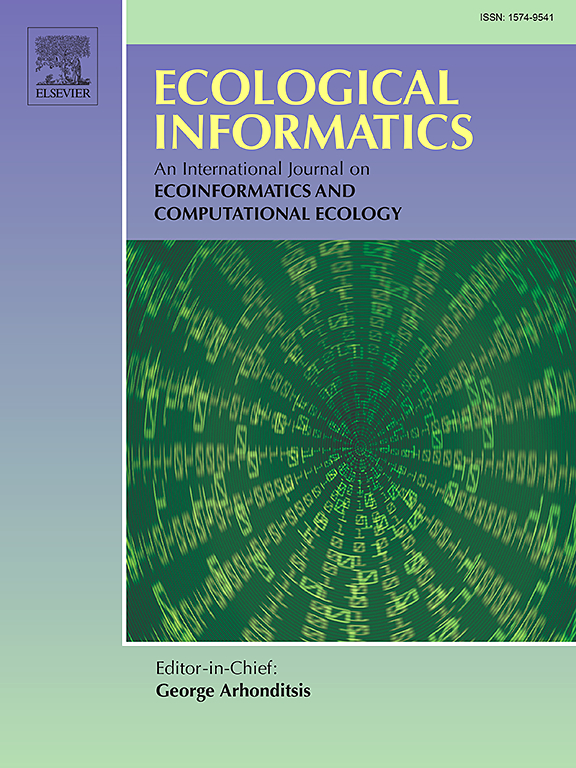Rice cropping sequence mapping in the tropical monsoon zone via agronomic knowledge graphs integrating phenology and remote sensing
IF 5.8
2区 环境科学与生态学
Q1 ECOLOGY
引用次数: 0
Abstract
Rice cropping sequence mapping via multitemporal remote sensing and agronomic techniques provides critical geoinformatics for agroecosystem modeling. The East Asian tropical monsoon region is an important rice-growing area, and the regional food security depends on efficient rice mapping. Frequent cloud cover during the rainy season leads to insufficient available optical remote sensing images that cover the growth stages of rice, which renders remote sensing-derived rice identification difficult. Thus, we proposed a simple and efficient strategy from an agronomic knowledge graph perspective in which specific phenological events of rice and Landsat/Sentinel-2 time series were employed to extract different rice cropping sequences on the Leizhou Peninsula (China). Then, a control group and five experimental groups were established by integrating spectral features via pixel- and object-based random forest (RF) algorithms. The results revealed that five key phenological events could be obtained for rice cropping sequence identification in the study area. The overall accuracy of the pixel-based classification results ranged from 83.48 % to 92.49 %, whereas that of the object-based classification results ranged from 84.98 % to 92.80 %. These findings indicate that efficient rice cultivation mapping via optical remote sensing data requires the selection of specific time windows corresponding to phenological events to benefit rice cultivation monitoring and regional agroecosystem sustainability.
通过整合物候学和遥感的农艺知识图谱绘制热带季风区水稻种植序列图
通过多时相遥感和农艺技术绘制水稻种植序列图为农业生态系统建模提供了重要的地理信息学依据。东亚热带季风区是重要的水稻种植区,区域粮食安全依赖于高效的水稻制图。雨季频繁的云层覆盖导致覆盖水稻生长阶段的光学遥感图像不足,这给遥感衍生的水稻识别带来了困难。因此,我们从农艺知识图谱的角度提出了一种简单有效的策略,即利用水稻特定物候事件和Landsat/Sentinel-2时间序列提取雷州半岛不同水稻种植序列。然后,通过基于像素和目标的随机森林(RF)算法整合光谱特征,建立一个对照组和五个试验组。结果表明,研究区水稻种植序列鉴定可获得5个关键物候事件。基于像元的分类结果总体准确率在83.48% ~ 92.49%之间,而基于目标的分类结果总体准确率在84.98% ~ 92.80%之间。这些结果表明,利用光学遥感数据进行水稻种植制图需要选择与物候事件相对应的特定时间窗,从而有利于水稻种植监测和区域农业生态系统的可持续性。
本文章由计算机程序翻译,如有差异,请以英文原文为准。
求助全文
约1分钟内获得全文
求助全文
来源期刊

Ecological Informatics
环境科学-生态学
CiteScore
8.30
自引率
11.80%
发文量
346
审稿时长
46 days
期刊介绍:
The journal Ecological Informatics is devoted to the publication of high quality, peer-reviewed articles on all aspects of computational ecology, data science and biogeography. The scope of the journal takes into account the data-intensive nature of ecology, the growing capacity of information technology to access, harness and leverage complex data as well as the critical need for informing sustainable management in view of global environmental and climate change.
The nature of the journal is interdisciplinary at the crossover between ecology and informatics. It focuses on novel concepts and techniques for image- and genome-based monitoring and interpretation, sensor- and multimedia-based data acquisition, internet-based data archiving and sharing, data assimilation, modelling and prediction of ecological data.
 求助内容:
求助内容: 应助结果提醒方式:
应助结果提醒方式:


